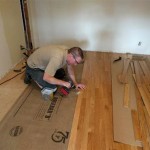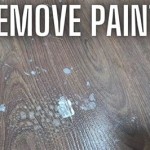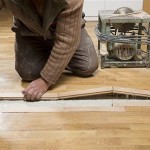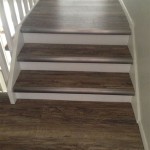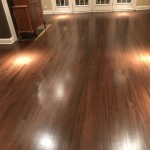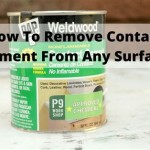How to Remove Tape Adhesive From Wood Floors
The presence of tape adhesive residue on wood floors presents a common challenge for homeowners. Tape, often used for securing rugs, marking areas during renovation, or even temporary repairs, can leave behind a sticky residue that is both unsightly and difficult to remove. The type of adhesive, the duration it has been adhered to the floor, and the finish of the wood all influence the removal process. Improper techniques can further damage the wood, leading to costly repairs. This article provides a comprehensive guide on safely and effectively removing tape adhesive from wood floors, outlining several proven methods and emphasizing preventative measures.
Before initiating any removal process, it is crucial to identify the type of wood flooring. Engineered hardwood, solid hardwood, and laminate flooring each possess different characteristics and react differently to cleaning solutions and removal techniques. Identifying the finish is equally important, as some finishes are more susceptible to damage from harsh chemicals or abrasive scrubbing. A small, inconspicuous test area should always be treated first to assess the potential for discoloration, scratching, or finish damage.
Understanding the Nature of Tape Adhesive
Tape adhesives typically consist of a carrier material (the tape itself) coated with an adhesive substance. This substance is often a type of polymer that establishes a strong bond with surfaces, including wood. Over time, factors such as heat, sunlight, and pressure can cause the adhesive to harden and become even more difficult to remove. The adhesive can also react with the floor's finish, becoming embedded within the grain of the wood. Certain types of tape, such as duct tape or packing tape, tend to leave behind a more persistent residue compared to painter's tape or masking tape.
The chemical composition of the adhesive also plays a significant role in removal difficulty. Some adhesives are solvent-based, while others are water-based. Solvent-based adhesives are often more resistant to water-based cleaning solutions and require specialized solvents for effective removal. Water-based adhesives, while generally easier to remove, can still leave behind a stubborn residue that requires persistence and appropriate techniques.
Furthermore, the age of the adhesive impacts its removability. Fresh adhesive is typically easier to lift than adhesive that has been present for an extended period. Over time, the adhesive can degrade and harden, forming a more tenacious bond with the wood fibers. This degradation process can also alter the chemical structure of the adhesive, making it less susceptible to common cleaning agents.
Safe and Effective Removal Methods
Several methods can be employed to remove tape adhesive from wood floors, ranging from gentle, everyday household items to more specialized products. The choice of method depends on the severity of the residue, the type of wood flooring, and the finish. Starting with the gentlest approach and gradually progressing to more aggressive methods is recommended to minimize the risk of damage.
1. Applying Heat: Heat softens the adhesive, making it easier to lift from the wood surface. A hairdryer, set to a low or medium heat setting, can be used to warm the affected area. The hairdryer should be held a few inches away from the floor and moved back and forth to distribute the heat evenly. After a few minutes of heating, gently try to peel or scrape the adhesive away using a plastic scraper or a soft cloth. Avoid using metal scrapers, as they can easily scratch the wood finish. The softened adhesive should come up with minimal effort.
2. Using Mild Solvents: Several household solvents can effectively dissolve tape adhesive. Isopropyl alcohol (rubbing alcohol) is a common choice due to its relatively mild nature and ability to dissolve many types of adhesives. Apply a small amount of isopropyl alcohol to a clean cloth and gently dab the affected area. Allow the alcohol to sit for a few minutes to penetrate the adhesive. Then, using a soft cloth or plastic scraper, gently rub or scrape the adhesive away. Repeat the process as needed until the residue is completely removed. Other mild solvents that can be used include vinegar, mineral spirits, or eucalyptus oil. Always test the solvent in an inconspicuous area first to ensure it does not damage the floor's finish.
3. Employing Specialty Adhesive Removers: Numerous commercial adhesive removers are specifically formulated for removing tape residue. These products often contain a blend of solvents and surfactants that effectively dissolve the adhesive without damaging the underlying surface. When using a commercial adhesive remover, carefully follow the manufacturer's instructions. Typically, the product is applied to the affected area, allowed to sit for a specified period, and then wiped or scraped away. Ensure the product is safe for use on wood floors and test it in an inconspicuous area before applying it to the entire affected area. Always wear gloves and ensure adequate ventilation when using chemical adhesive removers.
4. Utilizing Natural Oils: Natural oils, such as olive oil, coconut oil, or vegetable oil, can also be effective in removing tape adhesive. The oil penetrates the adhesive, weakening its bond with the wood surface. Apply a small amount of oil to the affected area and allow it to sit for several minutes. Then, using a soft cloth or plastic scraper, gently rub or scrape the adhesive away. After removing the adhesive, clean the area with a mild soap and water solution to remove any remaining oil residue. This method is particularly useful for removing residue from delicate wood finishes as it is less likely to cause damage.
5. Creating a Baking Soda Paste: A paste made from baking soda and water can act as a gentle abrasive to help remove stubborn adhesive residue. Mix baking soda with water to form a thick paste. Apply the paste to the affected area and let it sit for a few minutes. Then, using a soft cloth or sponge, gently rub the paste over the adhesive residue. The baking soda will act as a mild abrasive, helping to lift the adhesive from the wood surface. Rinse the area with clean water and dry thoroughly.
Preventative Measures and Aftercare
Preventing tape adhesive residue in the first place is the most effective approach. When using tape on wood floors, choose tapes specifically designed for delicate surfaces, such as painter's tape or masking tape with low-tack adhesives. Avoid using strong tapes like duct tape or packing tape, as they are more likely to leave behind residue. Always remove tape as soon as possible after its intended use. The longer the tape remains on the floor, the higher the likelihood of adhesive residue becoming embedded in the wood.
Proper cleaning and maintenance can also help prevent adhesive residue from accumulating. Regularly clean wood floors with a pH-neutral cleaner specifically formulated for wood surfaces. Avoid using harsh chemicals or abrasive cleaners, as they can damage the finish and make it more susceptible to adhesive residue buildup. Consider applying a protective coating, such as a floor wax or sealant, to create a barrier between the wood and potential adhesives. This barrier can make it easier to remove any residue that does occur.
After removing the tape adhesive, it is essential to clean the affected area thoroughly. Use a damp cloth and a mild soap solution to remove any remaining residue or cleaning agents. Dry the area completely with a clean, dry cloth. Inspect the area for any signs of damage, such as scratches or discoloration. If necessary, apply a small amount of wood polish or finish to restore the floor's appearance. Consider applying a protective furniture pad beneath furniture legs that have tape on them to prevent further issues.
In situations where the adhesive residue is particularly stubborn or covers a large area, professional wood floor cleaning or refinishing services may be necessary. Professionals have access to specialized equipment and cleaning solutions that can effectively remove even the most persistent adhesive residue without damaging the floor. Refinishing may be required if the adhesive has caused significant damage to the floor's finish or if the removal process has resulted in visible imperfections.
Furthermore, consider the environmental factors that can contribute to adhesive problems. High humidity and temperature fluctuations can affect the adhesive's properties. Maintaining stable indoor conditions can help prevent the adhesive from becoming overly sticky or difficult to remove. Consider using dehumidifiers or air conditioners to regulate humidity levels, particularly in areas where tape is frequently used. Protecting wood floors from direct sunlight can also help prevent the adhesive from hardening or reacting with the floor's finish. Curtains, blinds, or UV-blocking window film can be used to minimize sun exposure.
By understanding the nature of tape adhesive, employing safe and effective removal methods, and implementing preventative measures, homeowners can successfully remove tape residue from wood floors and maintain their beauty and integrity for years to come. Remember to always test any cleaning solutions or removal techniques in an inconspicuous area first and to proceed with caution to avoid damaging the wood floor's finish.

The Best Way To Remove Tape Residue From Hardwood Flooring Between Naps On Porch

4 Ways To Remove Adhesive From A Hardwood Floor Wikihow

Best Cleaner Ever To Remove Sticky Tape From Floors Etc Safe Easy

4 Ways To Remove Adhesive From A Hardwood Floor Wikihow

Easy Ways To Get Rid Of Carpet Tape On Wooden Floors Or Stairs Floor Sanding

Flooring Tips How To Remove Tape From A Hardwood Floor

How To Remove Tape Residue From My Wood Floor Knowledge Centre

Best Cleaner Ever To Remove Sticky Tape From Floors Etc Safe Easy

How To Quickly And Easily Remove Tape Residue Stylus Tapes International

How To Remove Duct Tape And Residue Goo Gone
See Also
